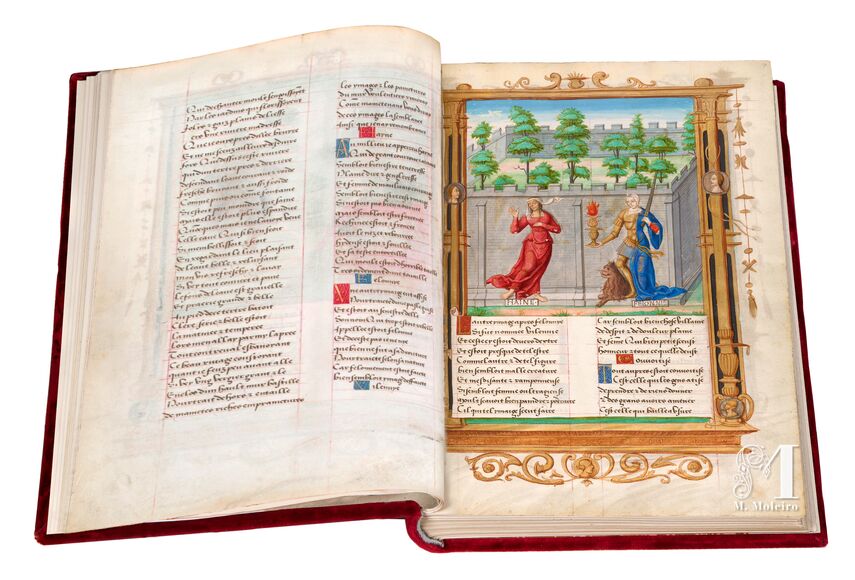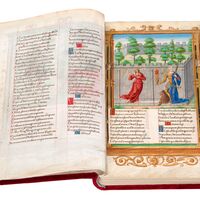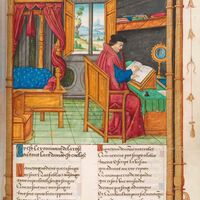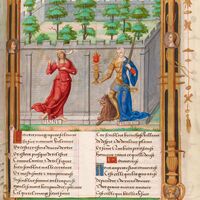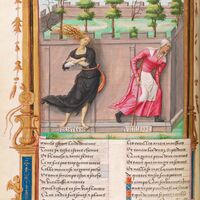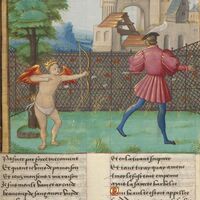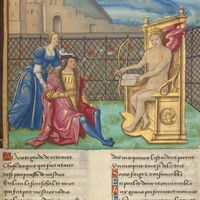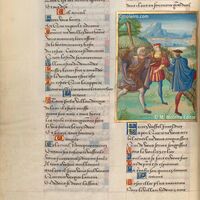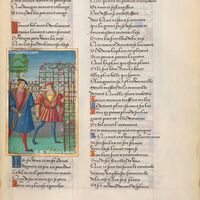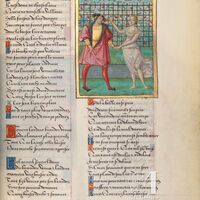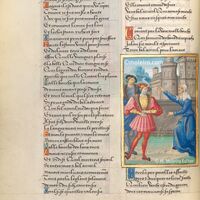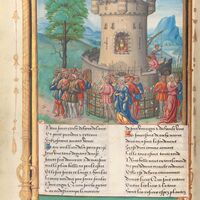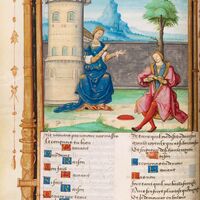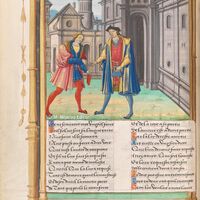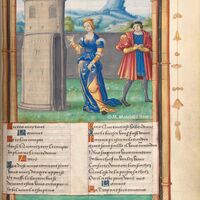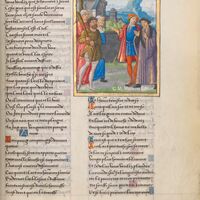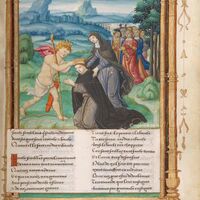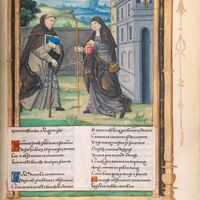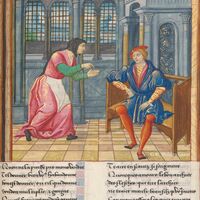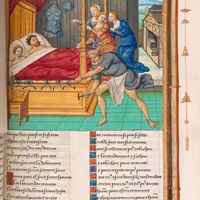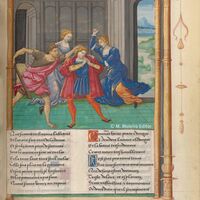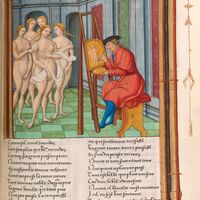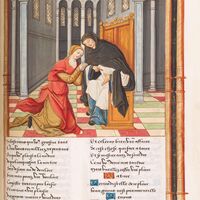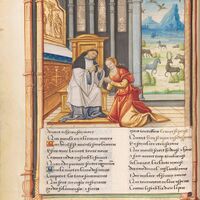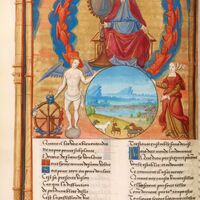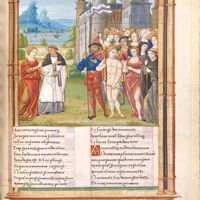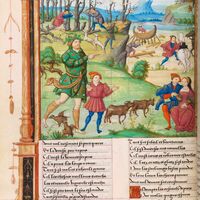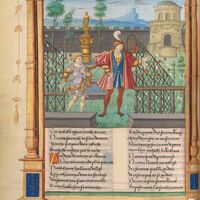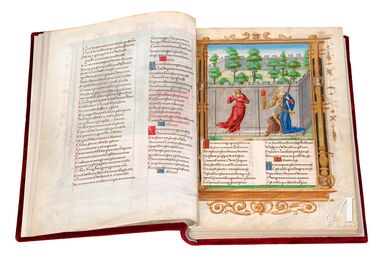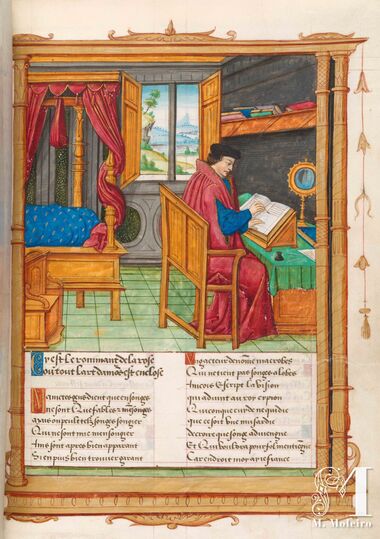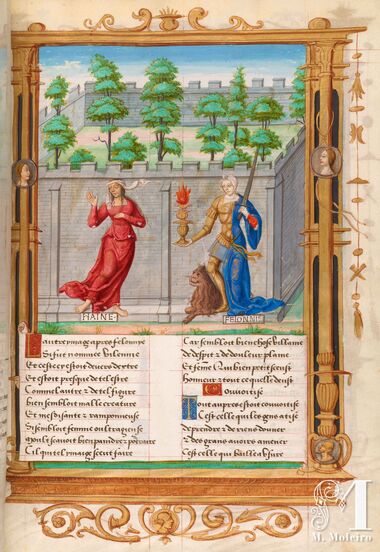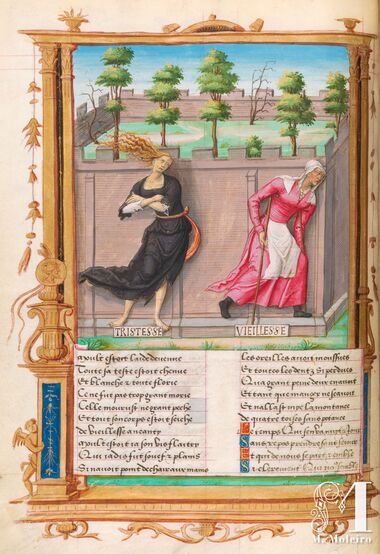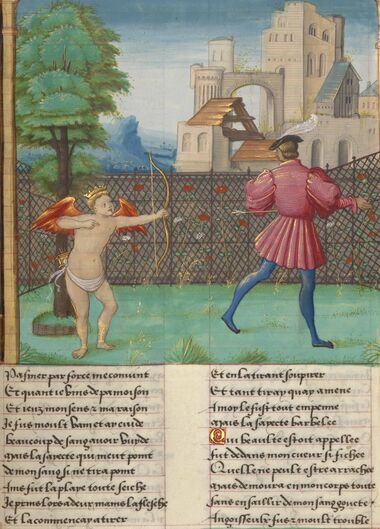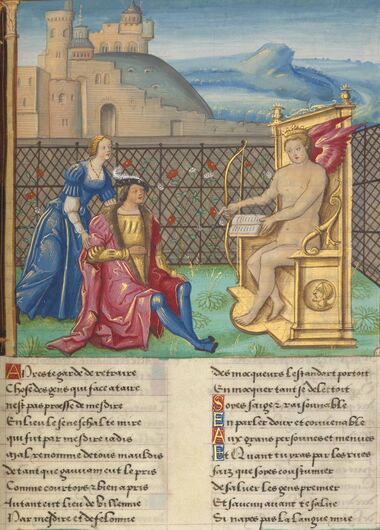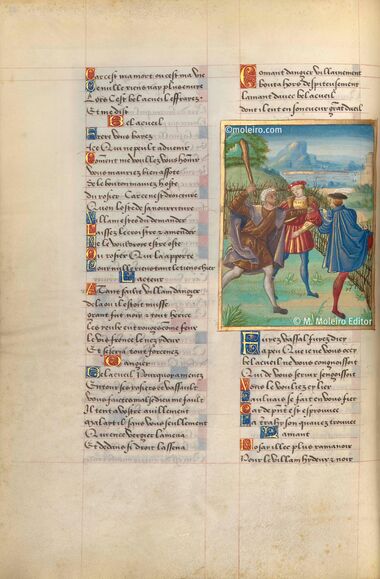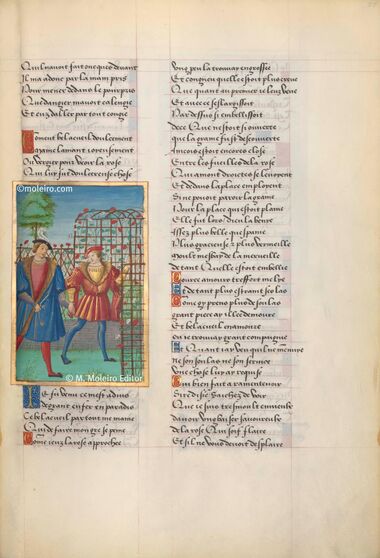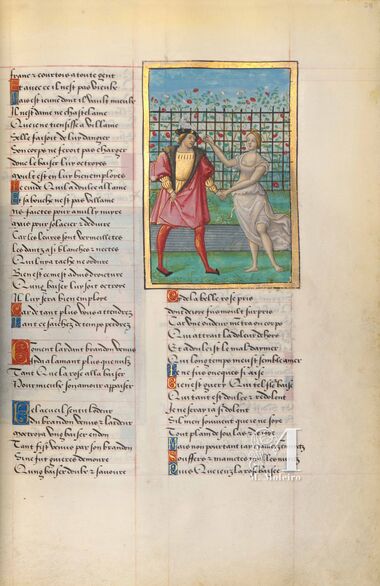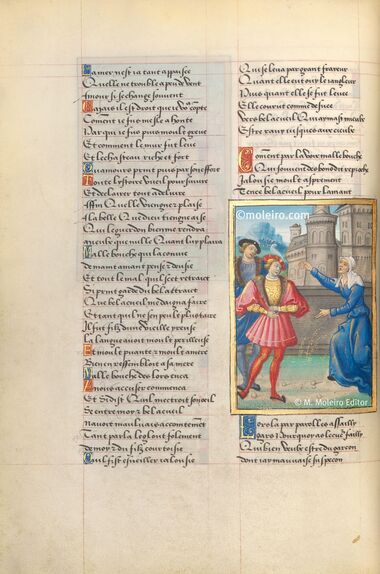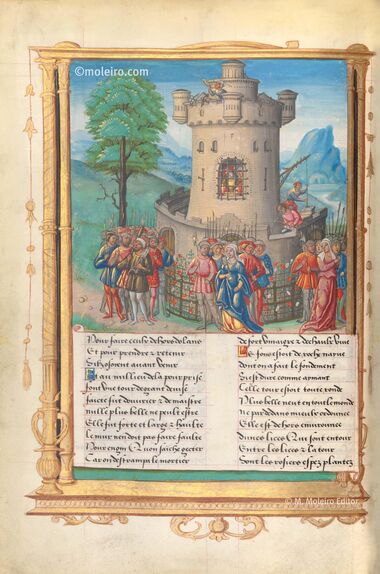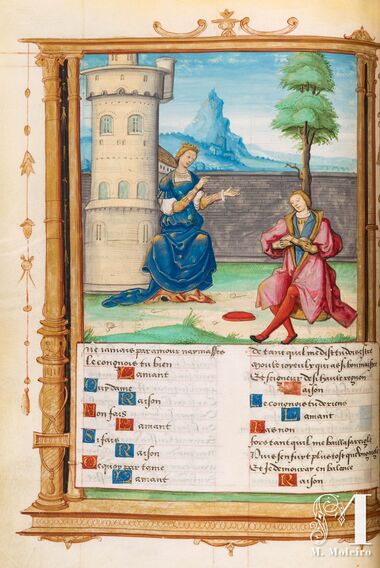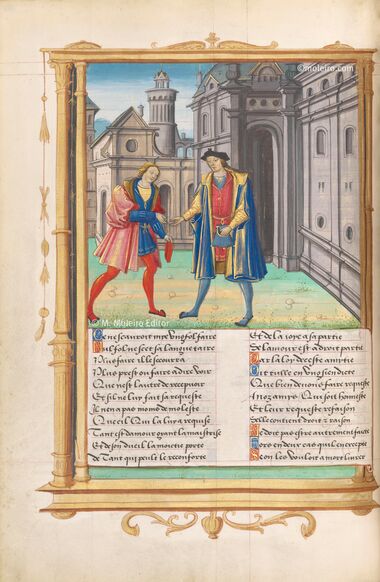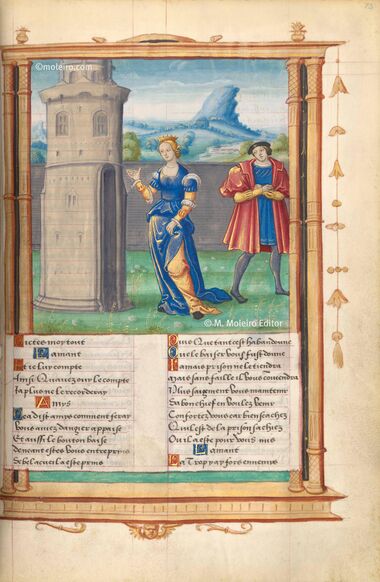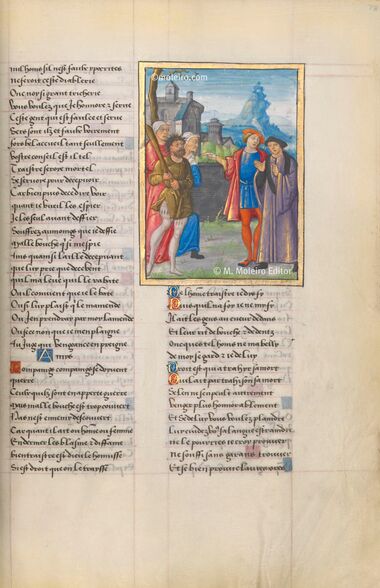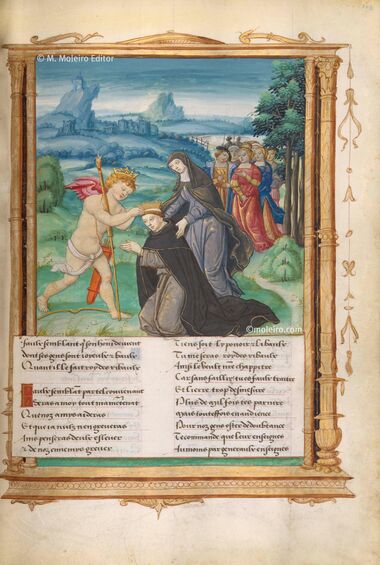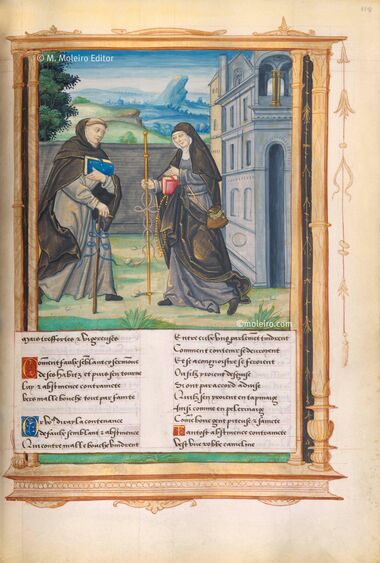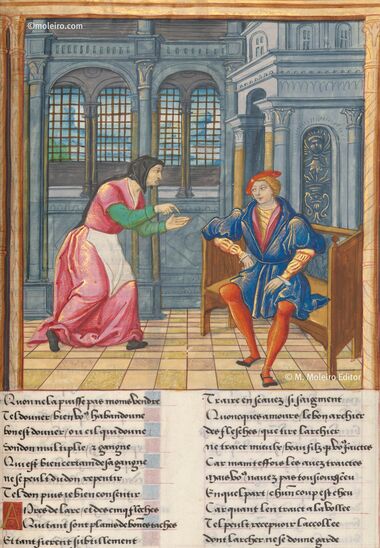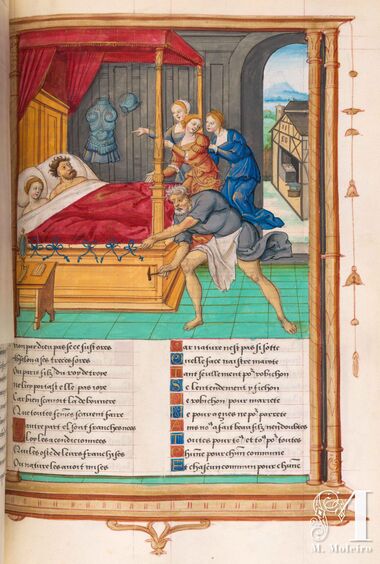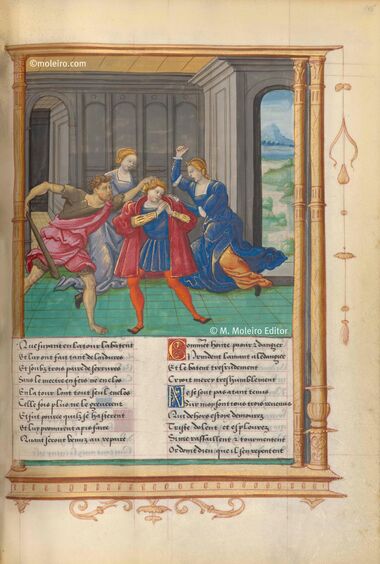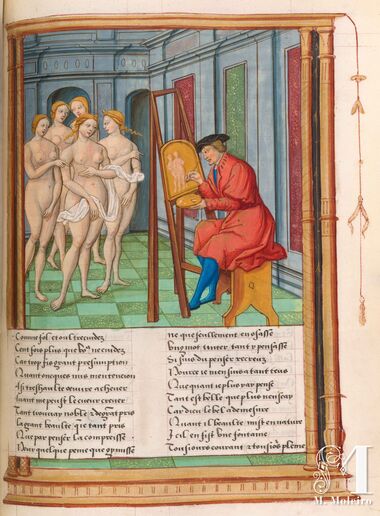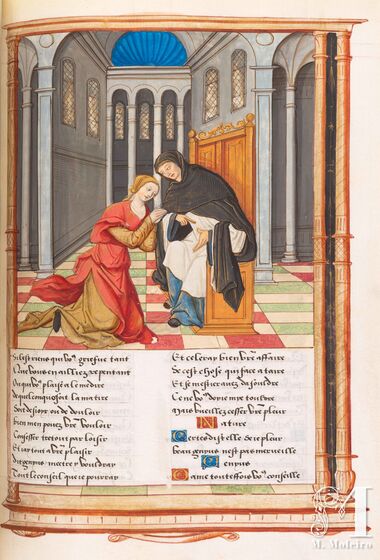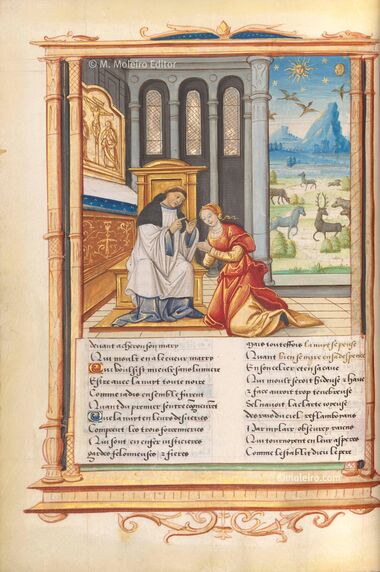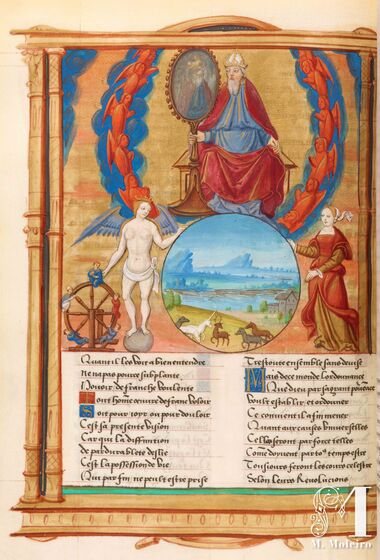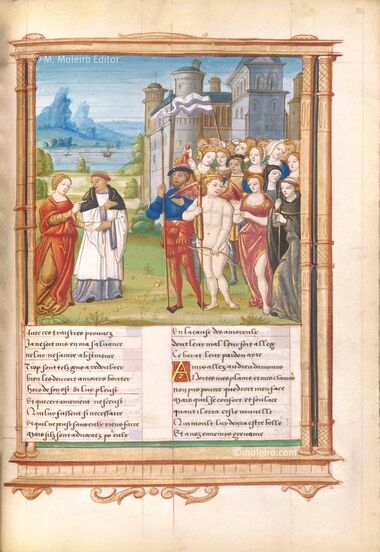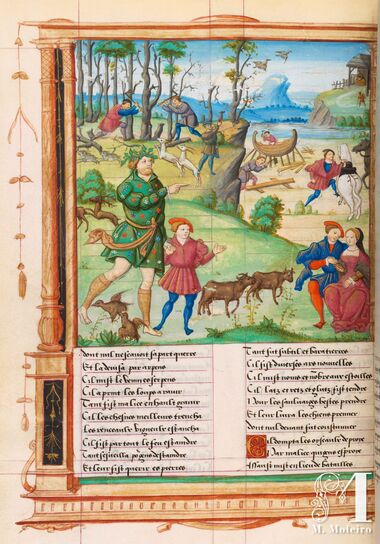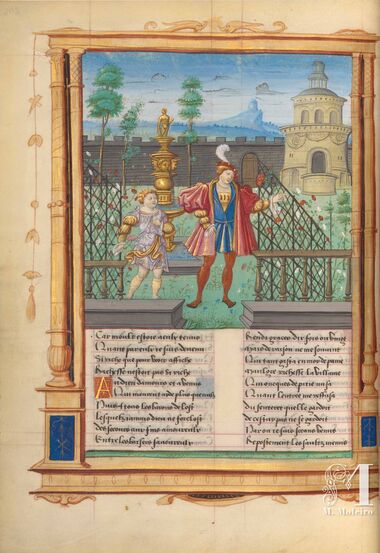The Roman de la Rose or the art of love in the Middle Ages
The Roman de la Rose, the purpose of which is to entertain readers and instruct them in the art of love, is a narrative poem written in the 13th century by two successive authors (due to the early death of the first): Guillaume de Lorris and Jean de Meun. It belongs to the tradition of the "art of love" inspired by Ovid, and is considered one of the key texts of European courtly love tradition. In the form of an allegorical dream, it tells of a young man's quest for a rose (a young woman), from love at first sight to the conquest of his beloved. Both gentle and misogynistic, traditional and subversive, this long poem deals with a timeless theme: love, its joys, its pitfalls, social and spiritual issues. The poem deals with issues such as the art of seduction, the crudeness of language, misogyny and the place of love in human destiny, themes that remain surprisingly relevant.
After Dante's Divine Comedy, the Roman de la Rose was the most copied secular work of the Middle Ages, and was a huge success, with some 250 known manuscripts. Read, quoted and admired, it seduced generations of readers between the late 13th and early 16th centuries. Printed from 1480 onwards, it remained a reference book until the Renaissance, when it was revived and became the object of heated debate and controversy.
The story
The Roman de la Rose is the story of an allegorical dream. The narrator, a young man, tells how he entered the garden where the God of Love resides and fell in love with a rosebud. The dream takes place in spring, the season of love and the awakening of nature.
After leaving the city and wandering through lush nature, the narrator arrives in front of a garden surrounded by high walls, behind which pleasant music can be heard. On these walls are ten allegorical figures representing everything that stands in the way of love: Old Age, Sadness, Poverty, Greed....
In the garden, the allegories of courtly love dance merrily: Wealth, Beauty, Frankness, Youth, as well as the God of Love and his double, Sweet Looks, symbolising "love at first sight", the birth of love. Love then shoots five arrows at the narrator, hitting him in the eye and in the heart. Distraught by his suffering, he becomes the vassal of the God of Love, in a ceremony modelled on that of vassalage. From then on, the narrator will not rest until he conquers the object of his desire.
Two authors, two visions of love
The first part, composed by Guillaume de Lorris around 1237, is an "art of love" in the tradition of the courtly love of the troubadours and epic romance. This poem is inspired by the romances of chivalry in that its narrative includes adventures, the search for the unattainable and dreamlike places.
The second part, written by Jean de Meun around 1270, is presented in a more cynical and scholarly manner. It includes 84 verses on alchemy, which, according to the author, is the only art capable of imitating nature perfectly.
Under the pen of Jean de Meun, the art of courtly love becomes a "mirror of love", with examples of famous lovers and victims of amorous sentiment, largely taken from Antiquity (the virtuous Virginia and Lucretia, the unfortunate Dido, the adulterous Venus and Mars, Eloise and Abelard, Pygmalion...). Through various characters, he explores different situations of love, ranging from chaste friendship to conjugal hell, as well as cunning and free love. The novel ends with a rather explicit scene of deflowering. This part can be shocking, so much so that, from the 1290s onwards, Gui de Mori reworked the Roman de la Rose in a more courtly and Christian sense.
An international bestseller
The fame of the Roman de la Rose spread beyond the borders of the kingdom of France and reached the great European poets. Geoffrey Chaucer, author of the famous Canterbury Tales, translated the Roman de la Rose into English. One of the Roman's allegories, the ?Old Woman", probably inspired one of the characters in the Canterbury Tales, the Wife of Bath, known for her zest for life.
The Roman de la Rose was also very famous in Italy, especially thanks to Dante, who may have been the author of one of the first Italian translations.
The Roman de la Rose of François I
The book was copied in 1520 by Girard Acarie for King François I, as can be seen from the coat of arms of François I on f. 3v, the dedication on f. 4v and the presentation illustration on f. 4r. The book also contains a panegyric to François I on f. 180v. The number 38 in the upper left corner of folio 1v is the signature of the manuscript when it was in the library of François I's.
The illustrations, most of which are set in architectural frames in a clear Renaissance style, are a faithful reflection of the pictorial narrative. The characters are distinguished by stylised bodies often in motion which, together with the modelling of the clothes, give the scenes great dynamism.
